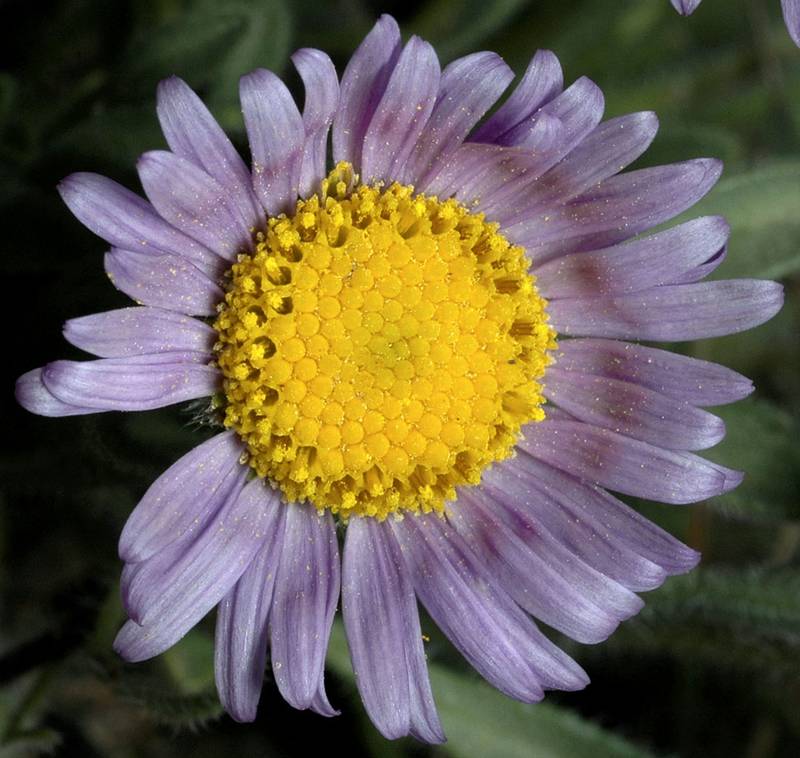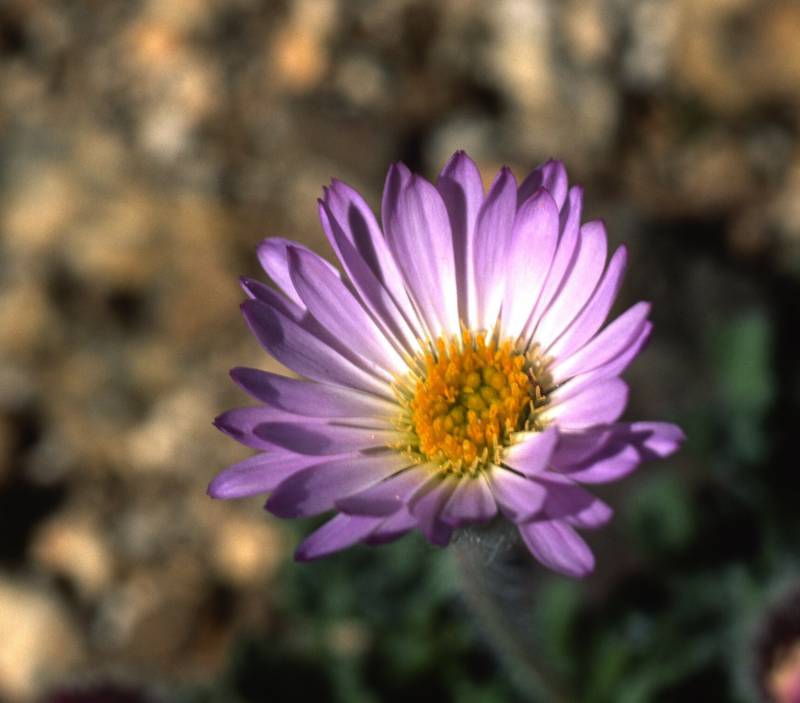|
hairy-seeded daisy, cushion fleabane
|
Salish fleabane, star peak fleabane
|
| Taprooted perennial with short-branched, woody base; stems to 15 cm. high; plants more or less spreading-hairy and glandular throughout. |
Perennial from a taproot and branched crown, forming dense cushions, the simple, erect, scape-like stems 1.5-7 cm. high, pubescent. |
Basal leaves linear-oblanceolate to spatulate, up to 8 cm. long and 12 mm. wide, the cauline leaves reduced. |
Leaves all basal on slender petioles; leaf blades obovate-spatulate, 3-16 mm. long and 3-6 mm. wide, the bases abruptly expanded, the margins usually with 3 rounded lobes and marginal hairs, the faces with stiff hairs. |
Heads solitary, hemispheric, the disk 9-20 mm. wide; involucre 5-9 mm. high; rays 15-45, pale pink or purple to deep violet, 4-15 mm. long and 1.3-3.6 mm. wide; pappus of 20-30 capillary bristles. |
Heads solitary, the involucres 8-11 mm long, the bracts in 2-3 series, usually purplish, especially the tips; ray flowers 15-32, white to bluish, 6-10 mm. long, spreading; disk flowers yellow; pappus of capillary bristles |
Achenes densely covered with long, silky hairs. |
Achenes 2-2.6 mm. long, 2-nerved. |
|
|
|
|
| April-June |
July-September |
| Dry, open, typically rocky areas, often with sagebrush. |
Cliffs, ridges, ledges and gravelly slopes at mid- to high elevations in the mountains. |
Occurring east of the Cascades crest in Washington; British Columbia to Oregon, east to western Idaho.
|
Ocurring east of the Cascades crest in the North and Central Cascade Mountains in Washington; southwestern British Columbia to central Washington.
|
| Native |
Native |
| Not of concern |
Sensitive in Washington (WANHP) |
E. acris, E. aliceae, E. annuus, E. aureus, E. basalticus, E. bloomeri, E. caespitosus, E. chrysopsidis, E. compositus, E. corymbosus, E. davisii, E. disparipilus, E. divergens, E. eatonii, E. elatus, E. filifolius, E. flettii, E. glacialis, E. howellii, E. inornatus, E. karvinskianus, E. leibergii, E. linearis, E. lonchophyllus, E. nivalis, E. oreganus, E. peregrinus, E. philadelphicus, E. piperianus, E. pumilus, E. salishii, E. speciosus, E. strigosus, E. subtrinervis |
E. acris, E. aliceae, E. annuus, E. aureus, E. basalticus, E. bloomeri, E. caespitosus, E. chrysopsidis, E. compositus, E. corymbosus, E. davisii, E. disparipilus, E. divergens, E. eatonii, E. elatus, E. filifolius, E. flettii, E. glacialis, E. howellii, E. inornatus, E. karvinskianus, E. leibergii, E. linearis, E. lonchophyllus, E. nivalis, E. oreganus, E. peregrinus, E. philadelphicus, E. piperianus, E. poliospermus, E. pumilus, E. speciosus, E. strigosus, E. subtrinervis |
|
|
| |
BC,
OR,
WA
Flora NW,
PNW Herbaria
WildflowerSearch
iNaturalist (observations)
USDA Plants Database



